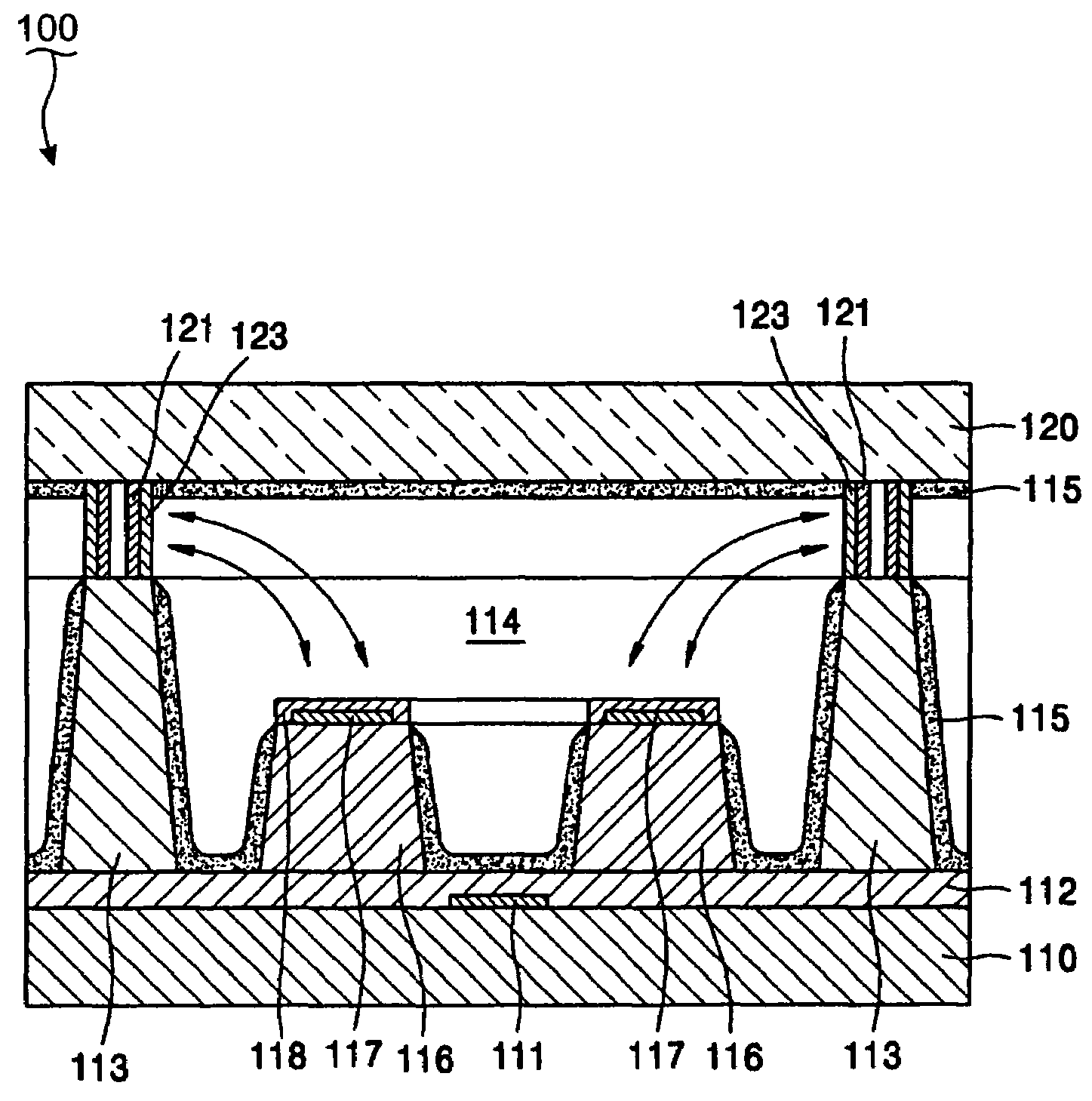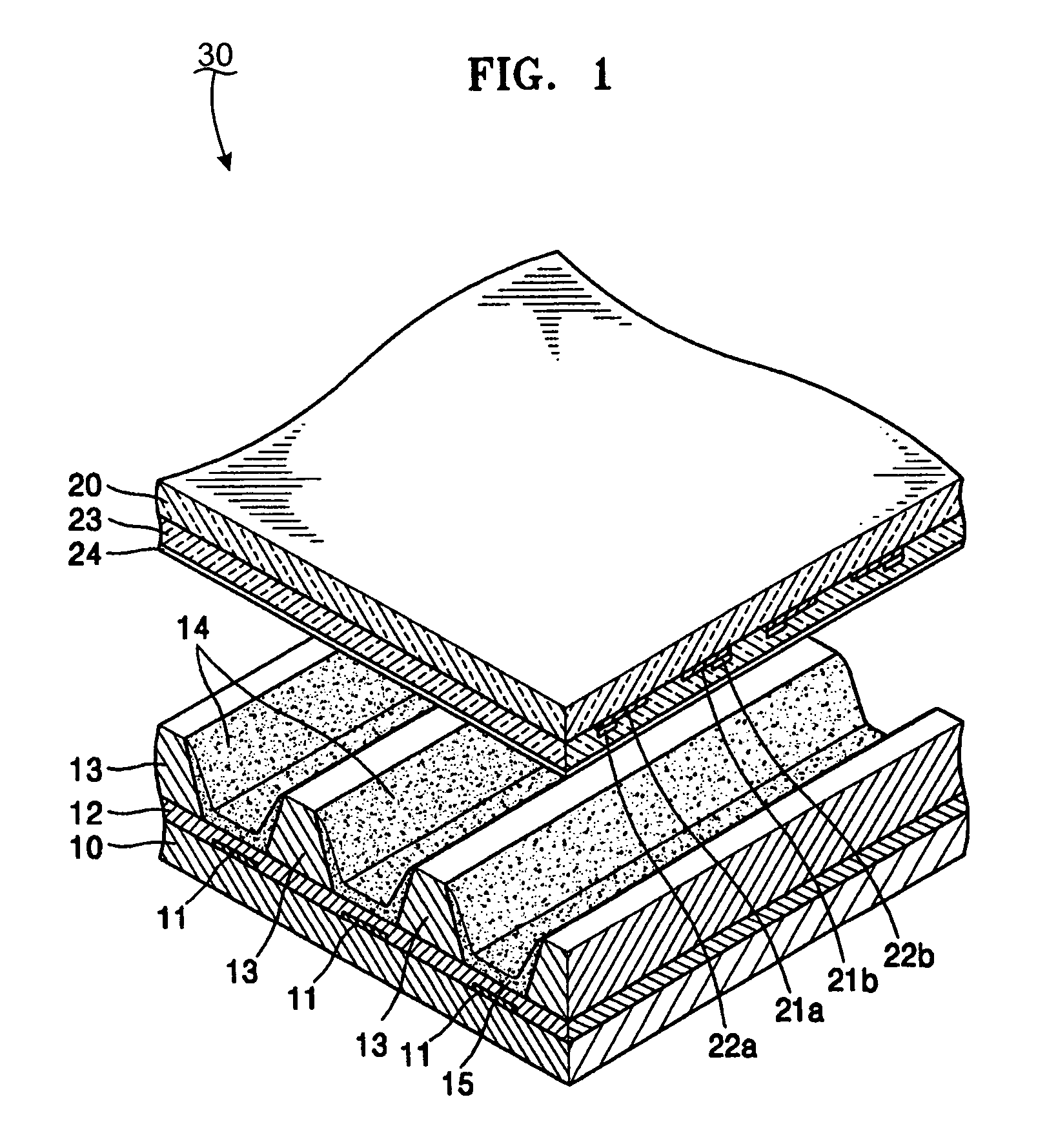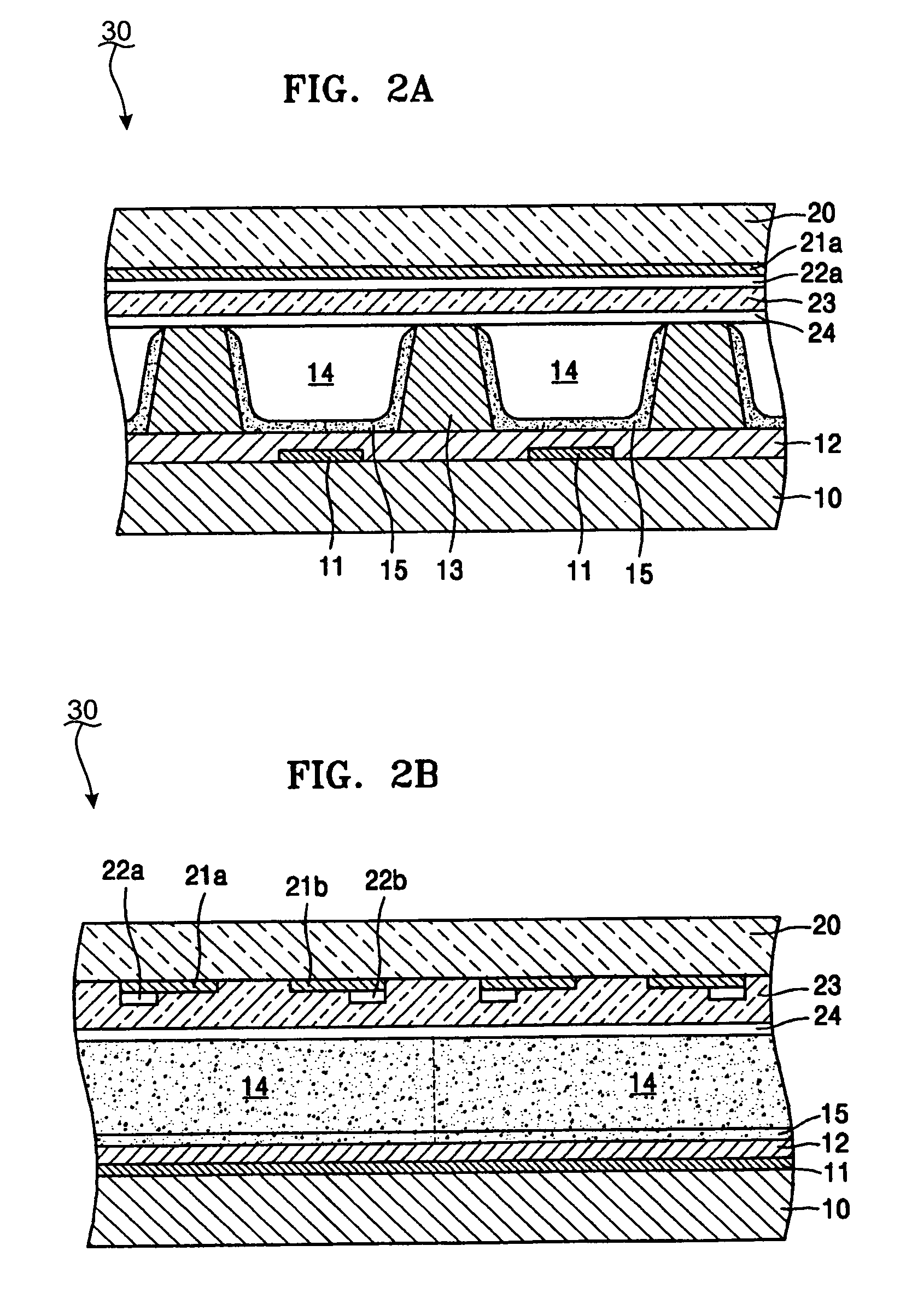Plasma display panel
a plasma display and display panel technology, applied in the manufacture of electrode systems, cold cathode manufacturing, electric discharge tubes/lamps, etc., can solve the problems of phosphor layer easily deteriorated by plasma, limited performance of surface discharge ac pdps, and easy deterioration of phosphor layers by plasma, so as to improve brightness and improve luminous efficiency
- Summary
- Abstract
- Description
- Claims
- Application Information
AI Technical Summary
Benefits of technology
Problems solved by technology
Method used
Image
Examples
first embodiment
[0038]Turning now to FIGS. 3 through 5, FIG. 3 is an exploded perspective view of a PDP 100 according to the present invention, FIG. 4 is a cross-sectional view of the PDP 100 of FIG. 3 and FIG. 5 is a perspective view depicting electrodes employed in the PDP 100 of FIG. 3. For the sake of clarity, a second dielectric layer 123, a phosphor layer 115, and a line connecting the electrodes are not illustrated in FIG. 3 even though these features are part of the design of PDP 100.
[0039]Referring to FIGS. 3 through 5, a lower substrate 110 and an upper substrate 120 are arranged opposite to each and spaced apart by a certain distance. A discharge space is located between the lower substrate 110 and the upper substrate 120. The lower substrate 110 and the upper substrate 120 are generally made of glass.
[0040]A plurality of address electrodes 111 are located on an upper surface of the lower substrate 110. The address electrodes 111 can have the shape of a band (or stripe) as illustrated of...
second embodiment
[0053]Turning now to FIGS. 9 through 11, FIGS. 9 through 11 illustrate views of PDP 200 according to the present invention, where FIG. 9 is an exploded view of PDP 200, FIG. 10 is a cross sectional view of PDP 200 and FIG. 11 is a perspective view of the electrodes used in PDP 200 of FIGS. 9 and 10.
[0054]Referring to FIGS. 9 through 11, a lower substrate 210 and an upper substrate 220 are arranged opposite to each other and separated from each other by a certain distance. A discharge space is located between the lower substrate 210 and the upper substrate 220. A plurality of address electrodes 211 are located on an upper surface of the lower substrate 210, and a first dielectric layer 212 is formed over the address electrodes 211 to cover the address electrodes 211. The address electrodes 211 can have the shape of a band, as illustrated of FIG. 11. Alternatively, an address electrode 211′ can have a rectangular plate shape having an aperture located at the center thereof, as illustr...
PUM
 Login to View More
Login to View More Abstract
Description
Claims
Application Information
 Login to View More
Login to View More - R&D
- Intellectual Property
- Life Sciences
- Materials
- Tech Scout
- Unparalleled Data Quality
- Higher Quality Content
- 60% Fewer Hallucinations
Browse by: Latest US Patents, China's latest patents, Technical Efficacy Thesaurus, Application Domain, Technology Topic, Popular Technical Reports.
© 2025 PatSnap. All rights reserved.Legal|Privacy policy|Modern Slavery Act Transparency Statement|Sitemap|About US| Contact US: help@patsnap.com



